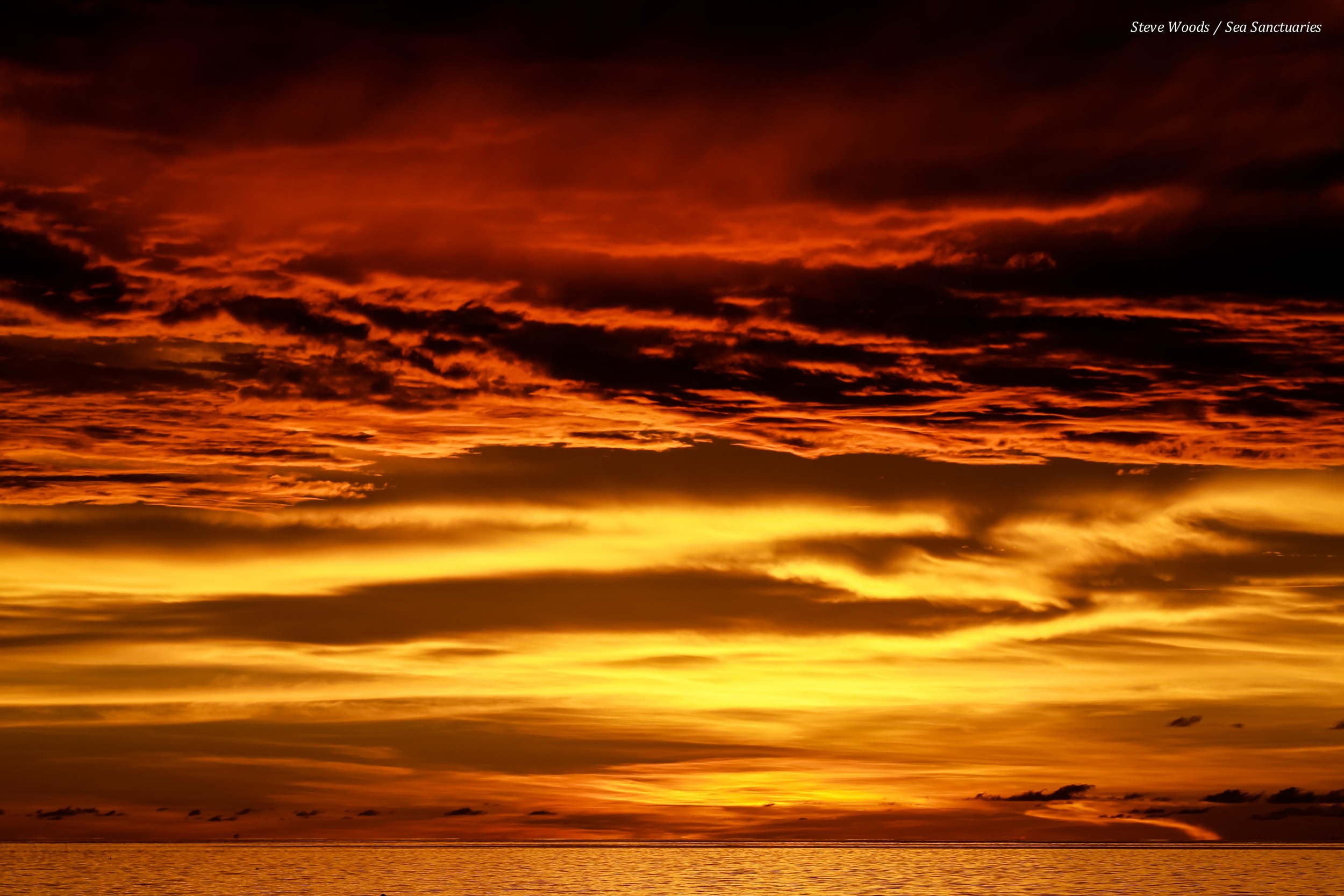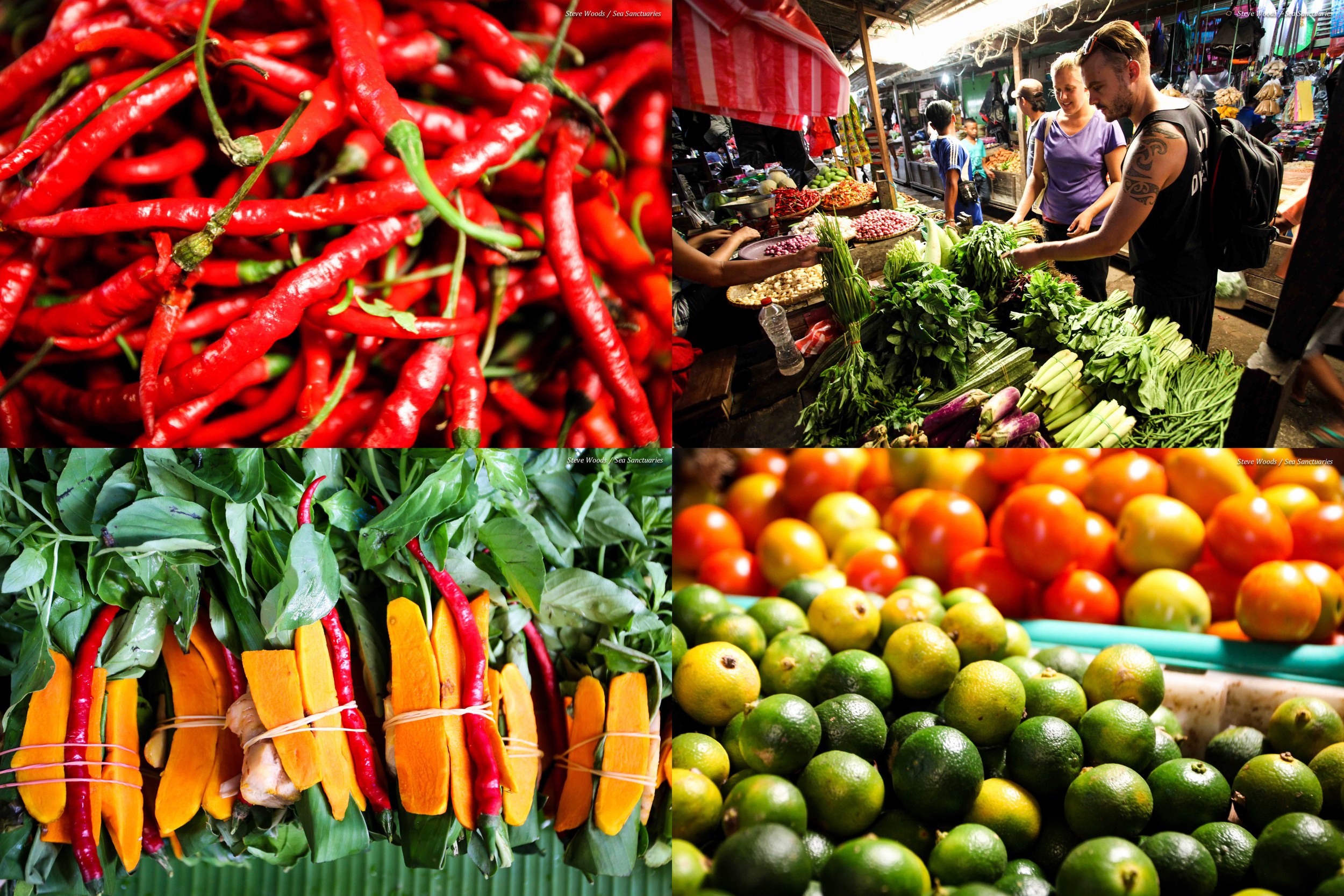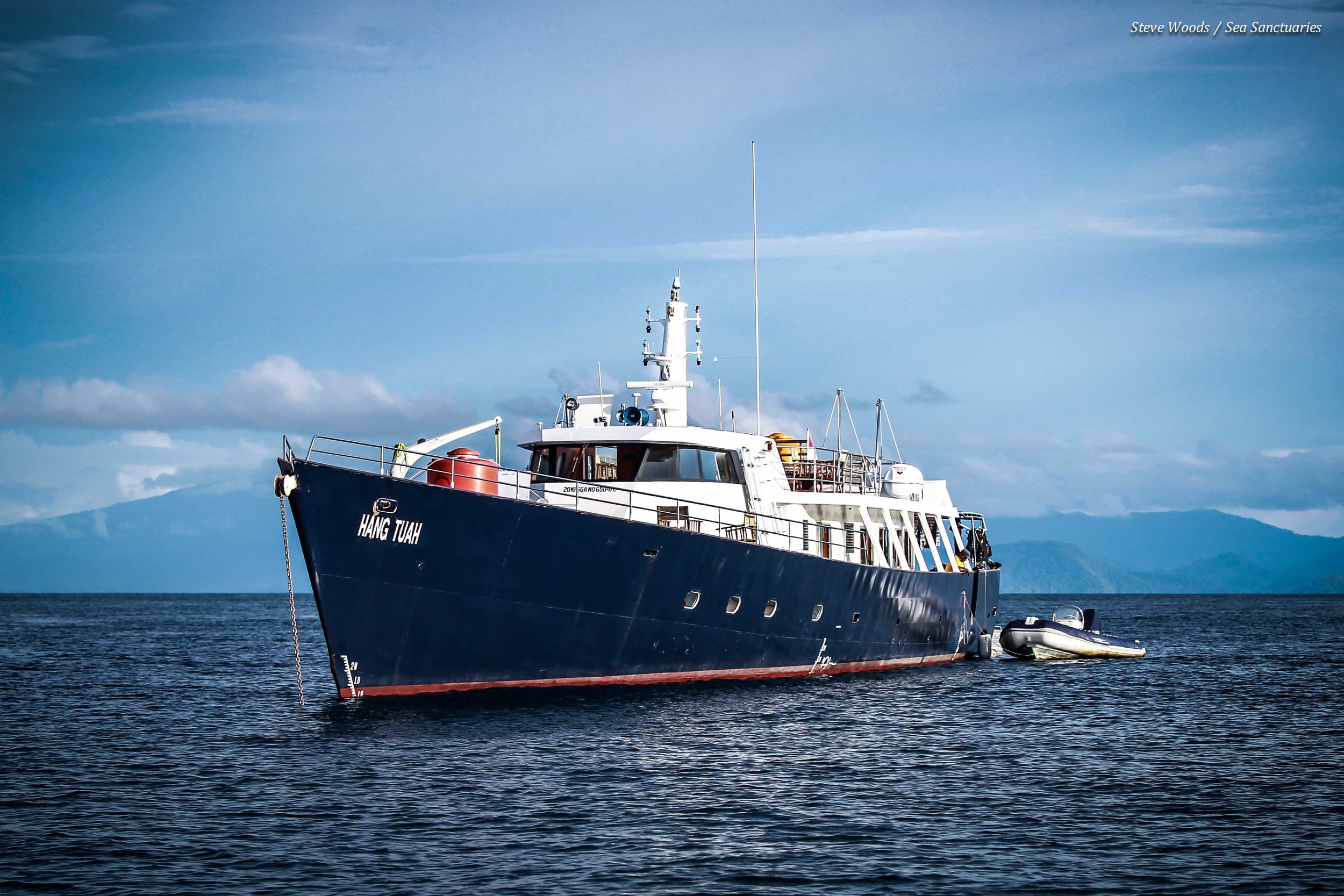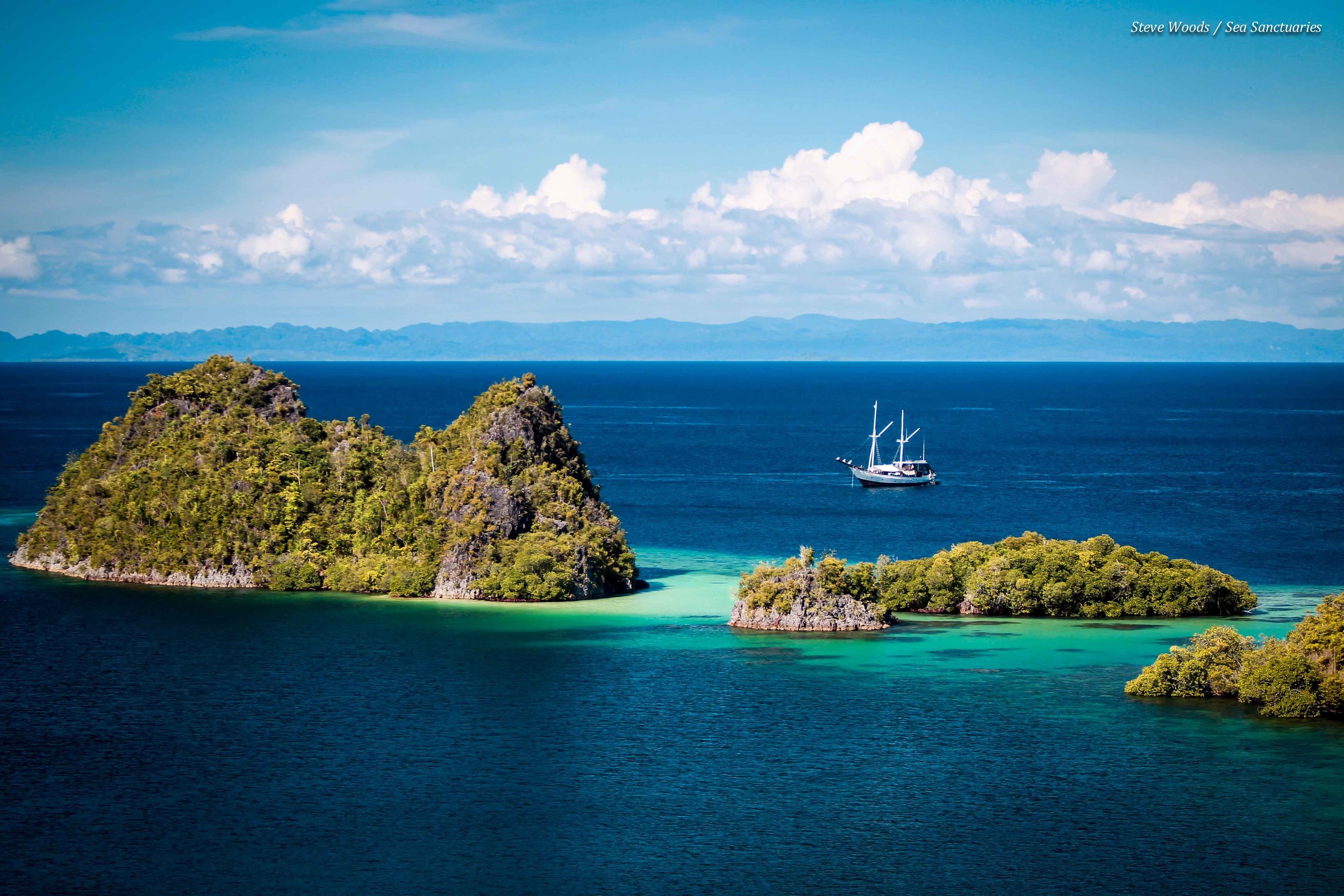FAQ’s/ Kit List
FAQ'S / KIT LIST
Here’s a list of FAQs but if you need any more information then please feel free to contact us with any questions.

How do I get to Sorong, West Papua?
Sorong is the town in West Papua Province, Indonesia where we collect you & take you to our conservation site. There are a number of options for getting to Sorong. Depending on where you are traveling from, its probably easiest to fly to either Singapore or Jakarta or Bali. You will then fly onward Sorong, this journey usually contains a stop off in either Makassar, Manado or Surabaya. This may mean staying one night in a hotel in either of these places and then flying onwards early the next day. We fly these routes regularly and they are the easiest and most reliable route. You may well be on the plane or in one of the hotels with other volunteers, we will let you know if you are.
There are different airlines that operate the different legs so you may find you fly with a couple of airlines. It is generally possible to book your flights over the Internet though you will usually have to be carrying the credit card you booked with. We can recommend travel agents in Indonesia that can organise flights and transfers for you, though this may incur extra charges, usually low but can be up to 25% of the total fee. Sky Scanner and Utiket are trustworthy websites as well as the operators below;
Lion Air - www.lionair.com.id
Garuda - www.garuda-indonesia.com
Sriwijaya Air - www.sriwijayaair.com.id
Merpati - www.merpati.co.id
Silk Air - www.silkair.com
There are many hotels and choices available for hotels in Bali, Makassar and Manado that can be booked on the internet and will arrange airport transfers. We can recommend an agent but, again, they will charge up to 25% for these services. Agoda and Hotelbookings.com are very useful for hotels, the details of the hotels we use regularly are below.
Sorong, Papua-Barat Indonesia. Tel: 62 951 325666. Fax: 62 951 325667.
Email: [email protected] . www.royalmamberamo.com
Hotel JE Meridien
Jalan Basuki Rahmat KM. 7,5 (Depan Bandara Udara
DEO) Telp. +62 (0951) 327999 Fax. +62 (0951) 329121. Sorong, Papua Barat
http://hoteljemeridiensorong.blogspot.com/
How will I find my hotel in Sorong
Either Sea Sanctuaries staff will meet you at the airport or Mr Ajib will collect you. He is a local agent and can also arrange your hotel in Sorong, domestic air tickets, check in and baggage transfer. He usually charges about US$10 for this service (Rp 100,000)
Contact for Mr Ajib +62 81344148872
How will I get to the conservation site
There are few different ways we do this. It depends whether Hang Tuah (our research boat) is in port or not. Normally you will be collected either from your hotel or the airport, usually early in the morning and taken to the port where there will be either Hang Tuah or a transfer boat waiting for you. It takes between 4 to 6 hours depending on the sea conditions and the type of boat to reach Penemu. Sometimes you may travel via Batnata as we have a transfer boat share agreement with a local resort.
Where will I stay
Once you reach Penemu, you will live aboard our floating research vessel the Hang Tuah. It is a 42m steel-hulled live-aboard dive boat. This boat is one of our main assets. It was kindly loaned to us by one of our donors and will act as the hub for your time out in Raja Ampat. There is ample living space on board with three cabins with various bed set-ups. All cabins have private showers and bathrooms. There is a large dining, communal area with desk space, flatscreen TV, stereo etc. This is where conservation talks, data entry, debriefs are held as well as the odd marine documentary in the evening. We have two outside communal areas, a seating area on the top deck where you can watch wonderful sunsets or look out of cetaceans and a planning table out on the dive platform where the compressor and dive gear is generally kept. We have a great local Indonesian / Papuan crew made up of the Captain, First Officer, Chief Engineer, Cook and two deck hands. Like all boats, we have to be careful with water and fuel consumption.
The Hang Tuah is permanently moored in Penemu where we can keep a good look out over a large section of our conservation area. Sometimes we move over to the island of Fam where the villages of Saukabu and Saupapir are located for other research activities. The area is scattered with archetypal limestone karst islands of Raja Ampat which are covered in jungle and rainforest, there is incredible marine biodiversity above the water with a high level of endemics also encountered. There are over 1200 species of orchid as well as other incredible land based flora and fauna which you will see when walking on land. Another reason why Raja Ampat is so famous is for its birdlife. The Red Bird of Paradise & Wilsons Bird of Paradise can be spotted here as well as many other species of rare birds endemic to the area.
What will I be doing
Volunteers will be involved in conservation diving & community development work. This can vary depending on where we are in our conservation & community development schedule but you will be helping us research & protect the marine ecosystems of Raja Ampat.

Is there telephone/internet connection?
The hotels have internet. However once on site there only phone signal is on the island of Fam which is roughly 20kms away. We do have an Iridium satellite phone on-board for emergency calls or by special arrangement but the cost of use is high at about US $2 per minute.
Can I charge batteries? What is the power supply?
There is a generator supplying 220-240 volt for 8-10 hours at night time when we try and charge everything necessary for the coming days activities. The remainder of the time we use batteries with 24 volt supply for lighting.

What emergency medical/evacuation options are there
There are hospitals in Waisai and Sorong. Generally in the event of a serious accident or illness the patient would be transported to Sorong for evacuation as directed by the insurance company. There is a decompression chamber nearby in Wasai & another chamber in Manado as well as a ‘Hyperbaric Health’ chamber in Bali

How is the weather?
We are less than 2 nautical miles from the equator. It is generally fairly hot and quite humid. The temperature is usually 28-33 degrees centigrade with occasional tropical rain showers. As we are water based, we don’t have any mosquitos or many insects being able to reach the boat. There are some on land though.

What is the water temperature & is diving possible all year
The water temperature is generally between 28-30 degrees centigrade so a rash vest or 3mm wet suit is all you need & yes we can dive all year.
What is the time zone
GMT + 9 hours in Eastern Indonesia (Raja Ampat)

What is the food like? Can you cater for special diets?
The food is a mix of Indonesian and occasional western food. We always have a vegetarian option. Please advise us of any allergies. We cannot accept responsibility for people with significant food allergies or special requirements.

Kit List
It is always necessary to pack as light as possible but there are a few items that you will need to bring. We are on the equator so it’s hot and sunny with the occasional tropical shower. You are more than likely to spend most of your time in swim wear so excessive clothing is not needed. Dress in the villages is a modest T shirt (no strings) and board shorts.
Here’s a suggested kit list to help get you started:
- All your documents (passport/tickets/insurance/C card/dive forms)
- Passports must be valid for 6 months from the date of entry
- Dive gear except weights and tanks (unless you plan to rent). We strongly recommend that you bring your own wetsuit (3mm) or rash vest & your own mask, snorkel & fins.
- T shirts / board shorts / underwear (washing bi-weekly)
- Swimsuits / sunsuit / long sleeves / sunscreen / hat
- Thin towels / sarongs / poncho
{C}- Personal first aid kit / medications
- Toiletries / water bottle
- Camera / torch
- You may also want to bring some snacks / binoculars / laptop / headphones..
We have a washing machine on board for laundry.
What is the diving like?
Diving in Raja Ampat is exceptional. It is a mecca for dive enthusiasts. The reason this areas has such a high level of bio-diversity is because we have so many different types of ecosystems.

We have an abundance of shallow coral gardens, isolated deep sea pinnacles, mangrove forests, secluded bays, sheltered lagoons and walls that sink into the deep.
There is much to explore around Penemu and a number of dive sites have gained international recognition. We are exploring now and discovering new sites all the time. The popular known sites are listed below.
- Barracuda – on the northern tip of Penemu, one of the fish aggregation areas with a delightful hard coral garden.
- Galaxy – on NE Penemu is a ridge and pinnacle, again lots of fish when the current is running and beautiful colourful soft corals on bommies in the top.
- Harto’s reef – SE coast of Penemu is feather star heaven, an incredibly beautiful dive site full of crocodile fish, and critters.
- My Reef – A submerged ridge running off the SE tip of Penemu, one of the fishiest dives in Penemu. Fusiliers, sharks, barracuda as well as other pelagics swirl among the sea fans.
- Keruo channel – A fan filled channel with colourful sponges and lots of small crabs and critters. Also makes for a great night dive.
- Melissa’s Garden – Located around a group of rock islands off the SE end of Penemu this is one of the most renowned dive sites. With an extensive delicate diverse hard coral garden the reef is alive with small colourful coral fish and the occasional stalking coral trout. Black tip sharks are frequently seen on the fringes.
- Batu Rufus – the location of our lookout post has a spectacular secret lagoon and an extensive hard coral garden. The outer reef has walls and slopes to explore with large tree corals and big bommies in the shallows.
What extra costs are there?
i) Visa on arrival US$ 25 for 30 days. 30 day extension US$ 75 (inc. agents fee)
ii) Airport taxes (domestic Rp 40,000 international Rp 150,000)
iii) Accommodation en route and in Sorong
iv) Raja Ampat park fees (valid for 1 year) tag Rp 500,000 (about US $50) (although this may increase to Rp 1,000,000 during 2014 (About US $100)
v) Personal items, snacks and souvenirs. The only shop near the conservation area is around 45minutes away by boat and sell a very small selection of snacks so its very hard to spend any money during the program
vi) If you do not own your own dive gear we can rent you BCD, regulator/octopus/pressure gauge, fins (not all sizes) & we have a limited number of computers, masks and snorkels. The cost of hiring BCD, regulator/octopus/pressure gauge, mask & snorkel is $100. If you wish to rent a computer (built in to some of our regulator sets) the cost is $50 extra.
vii) If you plan to arrive or depart on a date which is not scheduled as an arrival or departure date then there may be an extra cost for hiring a local boat to take you to or from the field station. We will notify you of the cost at the time of payment.


